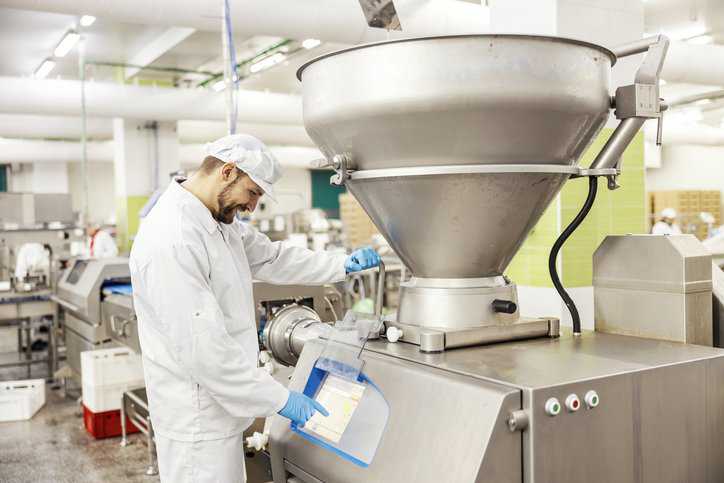NSF/ANSI 4-2024: Commercial Cooking Equipment Sanitation

When was the last time you dined at a restaurant or ordered take-out? On average, a person dines out 3 times per month and orders take-out 4.5 times per month. Implementing sanitation procedures at restaurants assures that we can continue to enjoy our food from restaurants. NSF/ANSI 4-2024: Commercial Cooking, Rethermalization, and Powered Hot Food Holding and Transportation Equipment provides food protection and sanitation requirements for commercial food equipment and their related components.
Commercial Food Equipment Sanitation
To prevent contamination and assure food safety, sanitizing commercial food equipment is essential for removing food and bacteria from surfaces and equipment. Sanitation encompasses methods, procedures, and chemicals used to clean food processing equipment as well as the hygienic design of facilities and equipment and food worker hygiene.
Commercial food equipment must be simple and quick to disassemble for regular cleaning and be free of any elements that might contribute to unsanitary conditions, such as mold growth. As such, health inspectors and surveyors use sanitation standards like NSF/ANSI 4-2024 to assure food equipment is designed to reduce the risk of foodborne illnesses.
What Is NSF/ANSI 4?
NSF/ANSI 4-2024 establishes food protection and sanitation requirements for the materials, design, construction, and performance of commercial cooking, rethermalization, and hot food holding and transport equipment and their related components.
Section 7, “Food equipment provided with a security package” of NSF/ANSI 4-2024 pertains to food handling and processing equipment that has been designed and manufactured for special use purposes. Food equipment designed and manufactured with a security package is utilized in environments such as correctional facilities, mental health facilities, or some schools. For these environments, where both sanitation and security are concerns, Section 7 contains exceptions to this standard that should only be applicable to the splash and nonfood zones of food equipment provided with a security package.
NSF/ANSI 4-2024 does not contain safety requirements.
What Food Equipment Is Covered in NSF/ANSI 4-2024?
Equipment covered by this American National Standard includes, but is not limited to:
- Ranges
- Ovens
- Fat/oil fryers
- Fat/oil filters
- Griddles
- Tilting griddle skillets
- Broilers
- Steam and pressure cookers
- Kettles
- Rotisseries
- Toasters
- Coffee makers and other hot beverage makers
- Component water heating equipment
- Proofing boxes and cabinets
- Hot food holding equipment
- Rethermalization equipment
- Hot food transport cabinet
Food Sanitation
Inspection, maintenance, servicing, and cleaning of food equipment and its components is essential for assuring food sanitation. NSF/ANSI 4-2024 details that food equipment should be designed and manufactured to prevent the harborage of vermin and the accumulation of dirt and debris. Furthermore, the equipment should allow food to be added, processed, finished, dispensed, and/or served in a sanitary manner.
What Does CIP Mean in the Food Industry?
Clean-in-place (CIP) describes systems and equipment used in food processing that can be cleaned and sanitized without being disassembled or moved. It is essentially the cleaning of complete items of plant or pipelines circuits without dismantling or opening of the equipment and with little to no movement involved by the operator. On the other hand, clean-out-of-place (COP) denotes systems and equipment that must be disassembled, relocated, or specialty treated in order to clean and sanitize them.
NSF/ANSI 4-2024 specifies requirements for food zones for which a CIP is intended, including:
- CIP should be designed and manufactured so that cleaning and sanitizing solutions can be circulated or passed throughout the fixed system.
- The design of the CIP should assure that cleaning and sanitizing solutions contact all food contact surfaces.
- CIP system should be self-draining or capable of being completely evacuated.
- Equipment for which CIP is intended should have a drain that enables the equipment to be plumed to waste.
NSF/ANSI 4-2024: Commercial Cooking, Rethermalization, and Powered Hot Food Holding and Transportation Equipment is available on the ANSI Webstore.







Your 💕 dedication to creating valuable content really shows in every single post you share